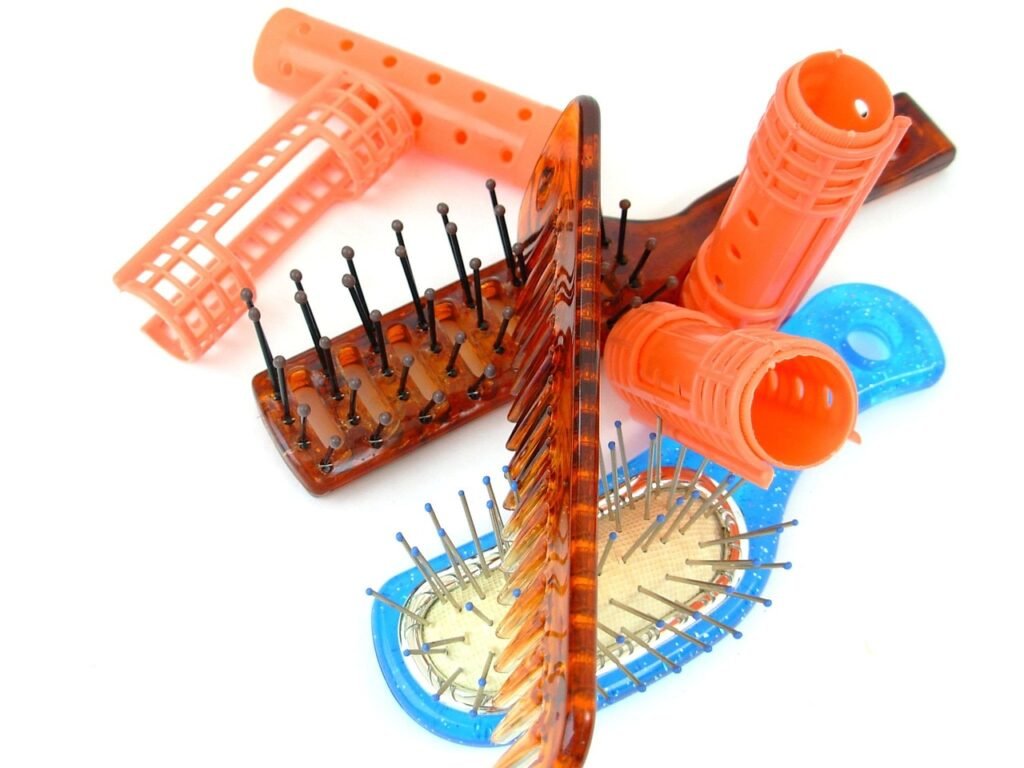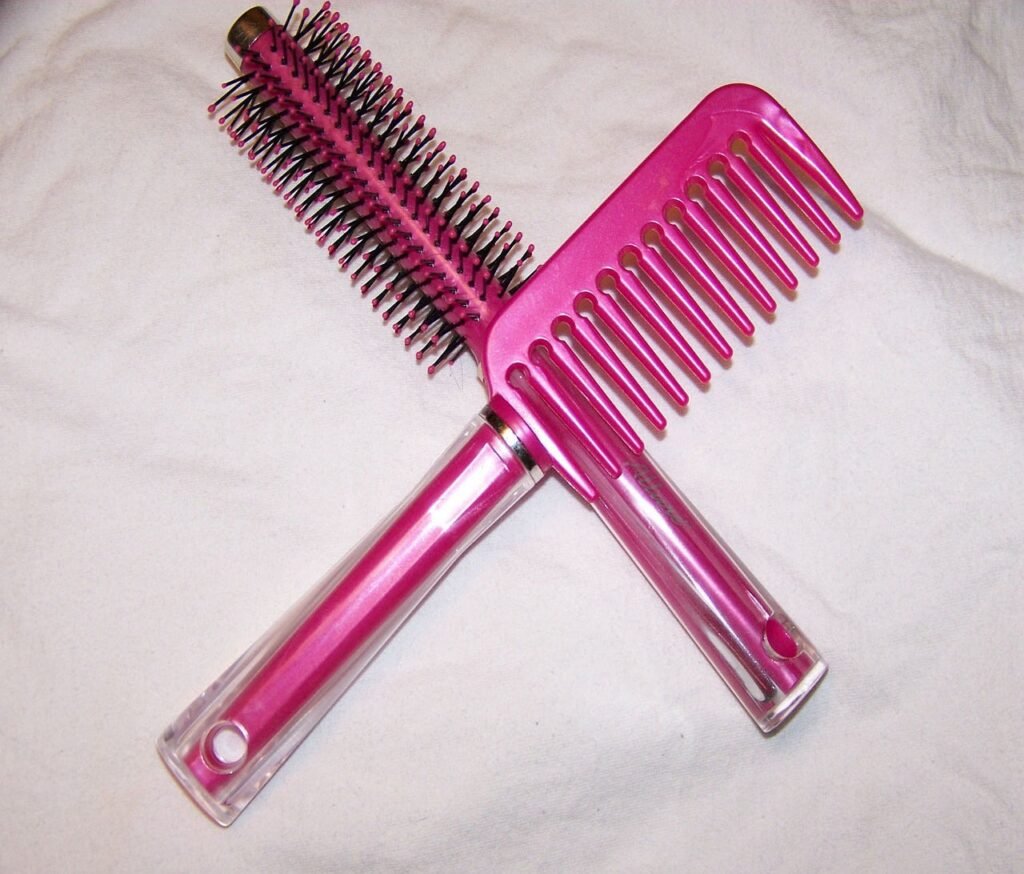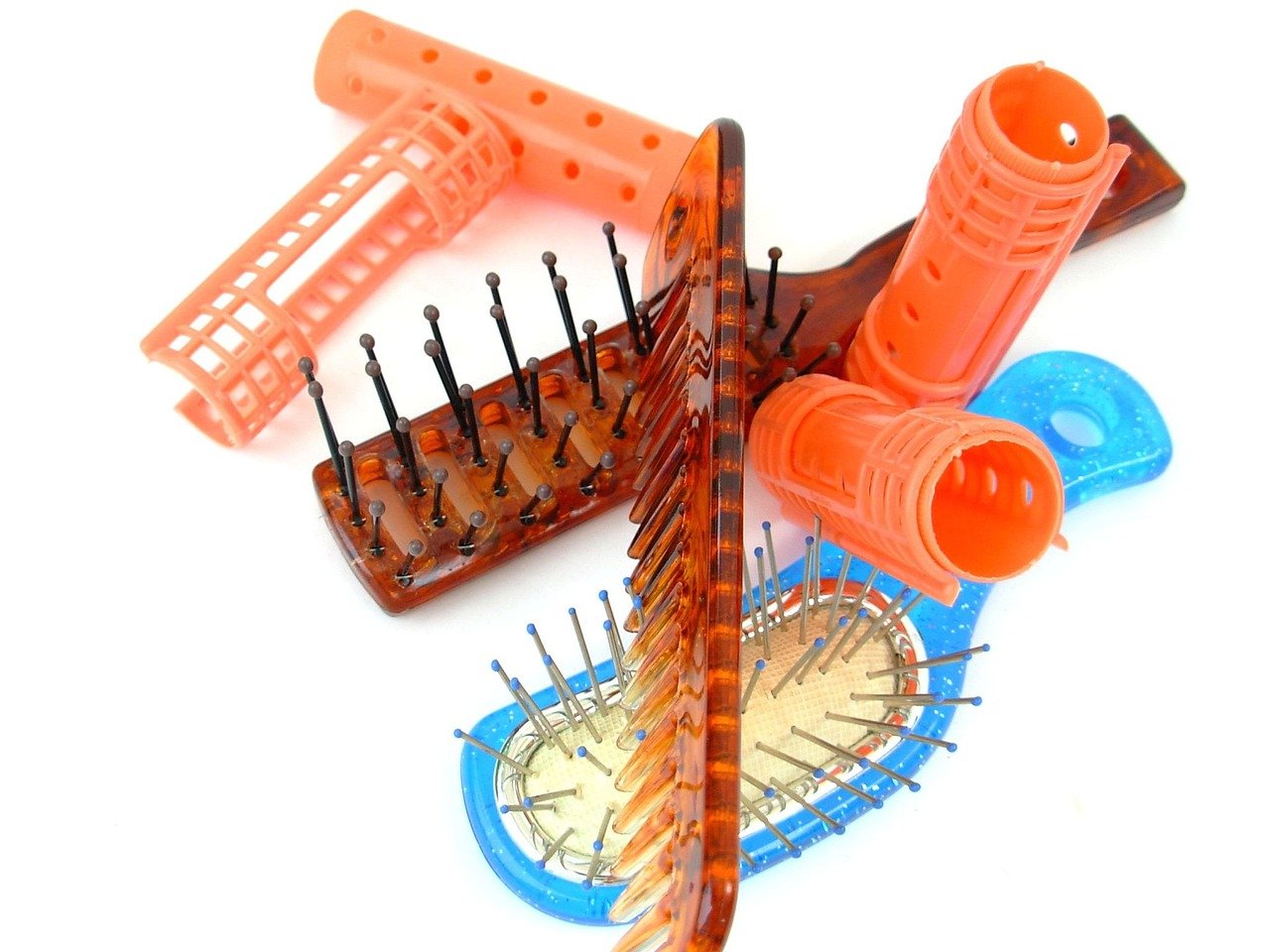Do you love the look and versatility of a human hair weave, but find that it doesn’t last as long as you’d like? If so, you’re not alone. Many people struggle to make their human hair weaves last for an extended period of time. In this article, we’ll share with you some proven methods to help you extend the lifespan of your human hair weave. By following these tips and tricks, you’ll be able to enjoy your weave for much longer, saving you time and money in the long run. So let’s dive in and learn how to properly care for your human hair weave!

This image is property of pixabay.com.
Choosing the Right Hair
When it comes to selecting a high-quality human hair weave, there are a few factors you should consider. First and foremost, it’s important to choose hair that is made from 100% human hair. Synthetic or mixed hair weaves may be cheaper, but they won’t give you the same natural look and feel as human hair. High-quality human hair weaves will have a more realistic texture and will blend seamlessly with your natural hair.
Another important consideration is whether to opt for virgin or remy hair. Virgin hair refers to hair that has never been chemically processed, while remy hair is collected in a way that keeps the hair cuticle intact and aligned. Both options are excellent choices, but virgin hair tends to be the highest quality and can be more expensive. Remy hair is also a great option and offers similar benefits at a slightly lower price point.
Lastly, think about the texture and color of the hair weave. It’s important to choose a texture that closely matches your natural hair, whether that’s straight, wavy, or curly. Additionally, consider the color of the hair weave and choose one that will blend well with your own hair color. If you’re unable to find a perfect match, you can always have the hair professionally dyed to achieve your desired look.
Proper Installation Techniques
Having your hair weave professionally installed is crucial for ensuring a long-lasting and comfortable fit. A professional stylist will have the expertise to properly install the weave, taking into account your natural hair texture and desired style. They will also be able to adjust the weave’s tightness to prevent any unnecessary tension or damage to your hair and scalp.
It’s important to ensure that the weave is not installed too tightly. A tight weave can cause discomfort and even lead to hair breakage or traction alopecia. Communicate with your stylist if you feel any excessive tightness during the installation process. They should be able to adjust the weave to a more comfortable level.
Another important factor to consider is to avoid excessive tension on the hair. This means avoiding hairstyles that pull tightly on the hair or scalp, such as high ponytails or buns. Excessive tension can lead to hair breakage and damage to the roots. Opt for loose and low manipulation hairstyles that allow your scalp and hair to relax.

This image is property of pixabay.com.
Regular Maintenance Routine
Taking care of your hair weave is essential for maintaining its longevity and keeping it looking its best. Establishing a regular maintenance routine will help ensure that your weave stays soft, manageable, and healthy.
Gentle detangling is an important step in your maintenance routine. Use a wide-tooth comb or brush to carefully detangle your hair, starting from the ends and working your way up. Avoid pulling or tugging at the hair, as this can cause breakage. Be patient and gentle when detangling to avoid unnecessary damage.
Excessive heat styling can lead to dryness and damage, so it’s important to minimize heat usage on your hair weave. If you do need to use heat, always apply a heat protectant product to shield your hair from excessive heat. Opt for lower heat settings and try to limit the use of heat styling tools to avoid unnecessary damage.
Moisturizing your hair regularly is crucial for maintaining its softness and preventing dryness. Use a leave-in conditioner or moisturizing spray to hydrate your hair weave. Pay extra attention to the ends, as they can become dry and prone to splitting. Applying a small amount of hair oil or serum to the ends can also help seal in moisture.
Using sulfate-free products for washing is recommended for hair weaves. Sulfates can strip the hair of its natural oils, leading to dryness and damage. Look for gentle, sulfate-free shampoos and conditioners that are specifically formulated for human hair weaves. These products will help keep your weave clean without drying it out.
Deep conditioning your hair weave on a regular basis is essential for maintaining its health and vitality. Use a deep conditioning treatment or hair mask to provide your weave with extra hydration and nourishment. Follow the instructions on the product and leave it on for the recommended amount of time to allow the conditioner to penetrate the hair shaft and moisturize from within.
While styling products can be fun to use, it’s important to avoid overusing them on your hair weave. Excessive use of styling products like gels, mousses, and hair sprays can leave a buildup on the hair, making it look dull and lifeless. Use these products sparingly and opt for lightweight formulas that won’t weigh down your hair.
Protecting your hair while sleeping is crucial for maintaining your hair weave and preventing tangles. Consider investing in a silk or satin pillowcase, as these fabrics are gentle to the hair and reduce friction, preventing knots and breakage. Alternatively, you can wrap your hair in a silk or satin scarf or bonnet before bed to protect it while you sleep.
Washing and Conditioning
Proper washing and conditioning techniques are essential for keeping your hair weave clean and healthy. By following a few simple steps, you can prevent tangling, keep your weave looking fresh, and ensure its longevity.
Before washing your hair, it’s important to detangle it gently to prevent further tangling during the washing process. Use a wide-tooth comb or brush to carefully remove any knots or tangles in your hair. Starting from the ends and working your way up to the roots, be patient and take your time to avoid unnecessary breakage.
When it comes to washing your hair weave, it’s best to use lukewarm water. Hot water can strip the hair of its natural oils, leading to dryness and damage. Lukewarm water is gentle on the hair and won’t cause unnecessary stress.
Apply shampoo and conditioner carefully to your hair. Start by wetting your hair weave and lathering a small amount of sulfate-free shampoo in your hands. Gently massage the shampoo into your scalp and work it through the lengths of your hair. Be careful not to scrub aggressively, as this can tangle the hair and cause damage. Rinse out the shampoo thoroughly.
When applying conditioner, focus on the mid-lengths and ends of your hair. These areas tend to be drier and can benefit from extra moisture. Leave the conditioner on for the recommended amount of time, as specified on the product instructions. Rinse out the conditioner thoroughly, making sure no product remains in your hair.
Using a sulfate-free shampoo is important for maintaining the health and integrity of your hair weave. Sulfates can strip the hair of its natural oils, leading to dryness and damage. Choose a gentle shampoo specifically formulated for human hair weaves to keep your hair clean without drying it out.
Aggressive scrubbing while washing your hair can lead to tangling and breakage. Instead, be gentle and massage the shampoo into your scalp using circular motions. This will help cleanse your scalp while minimizing tangles and damage to the weave.
After washing and conditioning, rinse your hair thoroughly to ensure all products are removed. Leaving residue in your hair can make it appear dull and lifeless. Rinse your hair with lukewarm water until the water runs clear, indicating all products have been rinsed out.
Using a leave-in conditioner after washing your hair can provide additional moisture and help maintain the softness of your hair weave. Apply a small amount of leave-in conditioner to the lengths of your hair, focusing on the ends. This will help keep your hair hydrated and nourished throughout the day.

This image is property of pixabay.com.
Styling Tips and Techniques
When it comes to styling your hair weave, there are a few tips and techniques that can help you maintain its health and prevent damage. By following these guidelines, you can enjoy a wide variety of hairstyles while keeping your hair weave looking its best.
Excessive heat from styling tools can cause dryness and damage to your hair weave. Try to minimize the use of heat styling tools such as flat irons and curling irons. If you do need to use heat, always apply a heat protectant product to shield your hair from excessive heat. Opt for lower heat settings and avoid using heat styling tools every day.
Using heat protectant products is essential when using heat styling tools on your hair weave. These products create a barrier between your hair and the heat, helping to prevent damage and dryness. Apply a heat protectant spray or serum to your hair before using any heat styling tools.
Minimizing the use of hair sprays and gels can help prevent buildup and keep your hair weave looking fresh. Excessive use of these products can leave residues on your hair, making it appear dull and lifeless. Opt for lightweight and non-greasy formulas when using hair sprays and gels to avoid weighing down your hair.
Choosing low manipulation hairstyles can help reduce the risk of damage to your hair weave. Low manipulation hairstyles are those that require minimal pulling, brushing, or combing, and allow your hair to rest and grow. Examples of low manipulation hairstyles include loose braids, buns, or simply wearing your hair down. These styles minimize stress on your hair and promote healthy growth.
Avoiding tight ponytails or buns is important for preventing tension on your hair weave. Tightly pulling your hair back can lead to breakage and damage, particularly around the hairline and edges. Instead, opt for looser hairstyles that allow your hair to flow naturally and avoid excessive pulling or tugging.
Using silk or satin hair accessories can help minimize friction and reduce damage to your hair weave. Silk and satin fabrics are gentle against the hair and can help prevent tangles and breakage. Consider using silk or satin scrunchies, headbands, or hair ties to keep your hair in place without causing unnecessary damage.
Excessive brushing or combing can lead to tangling and breakage, so it’s important to avoid overdoing it. Be gentle when brushing or combing your hair, starting from the ends and working your way up. Use a wide-tooth comb or brush specifically designed for detangling to minimize damage and preserve the integrity of your hair weave.
Protective Styling
Protective hairstyles are a great way to minimize tension and promote healthy hair growth while wearing a hair weave. These styles help protect your natural hair and weave from daily manipulation, reduces exposure to environmental factors, and allows for easier maintenance. Here are a few protective styling options you can consider:
Using braids or twists as protective hairstyles can help minimize tension on your hair and encourage healthy growth. Choose a professional stylist who specializes in braiding or twisting to ensure a neat and secure style. Avoid braiding or twisting your hair too tightly to prevent damage.
Avoiding styles that pull on the edges is essential for maintaining the health of your hairline. Hairstyles with tight tension around the hairline can lead to traction alopecia or thinning of the edges. Opt for looser hairstyles or styles that distribute the tension evenly throughout your hair.
Wearing a silk or satin bonnet or scarf at night is a simple yet effective way to protect your hair while you sleep. These fabrics minimize friction and reduce the risk of tangling and breakage. Invest in a high-quality bonnet or scarf to ensure your hair is adequately protected while you rest.
Wrapping your hair before sleeping can help maintain the integrity of your hairstyle and prevent unnecessary tangling. Depending on the length and style of your hair weave, you can wrap it around your head in a circular motion or create a loose bun using bobby pins. Use a silk or satin scarf to secure the wrap and protect your hair during the night.
Avoiding Environmental Damage
Protecting your hair weave from environmental damage is crucial for maintaining its health and prolonging its lifespan. Environmental factors such as sun exposure, chlorine, and extreme weather conditions can all take a toll on your hair. Here are some tips to safeguard your hair weave:
Excessive sun exposure can cause dryness and damage to your hair weave. Whenever possible, protect your hair with a hat or headscarf when spending extended periods in the sun. If a hat or scarf is not feasible, consider using a UV protectant spray specifically designed for hair to shield it from the sun’s harmful rays.
Swimming in chlorinated or saltwater can be particularly damaging to your hair weave. Both chlorine and salt can strip the hair of its natural moisture and cause dryness and tangling. Before swimming, wet your hair with fresh water to minimize absorption of chlorine or saltwater. After swimming, rinse your hair thoroughly with fresh water and apply a leave-in conditioner to restore moisture.
Using a UV protectant spray is an effective way to shield your hair weave from the sun’s damaging rays. These sprays create a protective barrier that helps reduce the impact of UV radiation on your hair. Apply the UV protectant spray to your hair before going outside, especially if you’ll be exposed to direct sunlight for extended periods.
Wearing a hat or headscarf in extreme weather conditions, such as strong winds or extreme heat, can help protect your hair weave from damage. These weather conditions can cause tangling, frizz, and dryness, so it’s important to shield your hair as much as possible. Opt for a wide-brimmed hat or a headscarf made from a breathable fabric to ensure comfort while protecting your hair.
Trimming and Maintaining Ends
Trimming your hair weave regularly is important for maintaining its health and preventing split ends. Over time, the ends of your hair may become dry and damaged, leading to split ends. Trimming the ends on a regular basis helps remove the damaged hair and promotes healthy growth.
Avoid excessive cutting when trimming your hair weave. It’s important to find a balance between removing split ends and maintaining the length of your hair. Consult with a professional stylist who specializes in hair weaves to ensure an accurate and appropriate trim.
Moisturizing and sealing the ends of your hair is essential for preventing dryness and split ends. After washing and conditioning your hair, apply a small amount of hair oil or serum to the ends. This will help seal in moisture and keep your ends hydrated throughout the day.
Avoid excessive brushing of the ends of your hair, as this can cause unnecessary breakage. Instead, focus on gentle detangling and minimize any unnecessary manipulation. Be patient when detangling and start from the ends, working your way up to avoid causing damage to the hair.
Avoiding Chemical Treatments
Minimizing the use of chemical treatments is important for maintaining the integrity and health of your hair weave. Chemical processes such as relaxers or perms can be harsh on the hair and scalp, leading to dryness, damage, and breakage. Here are some tips to avoid excessive chemical treatments:
If you choose to use relaxers or perms, try to space out the treatments as much as possible. Giving your hair and scalp time to recover between chemical processes will help minimize the potential damage. Consult with a professional stylist who specializes in chemical treatments to ensure a safe and appropriate application.
Excessive bleaching or coloring can also be damaging to your hair weave. Bleaching and coloring processes involve the use of harsh chemicals that can strip the hair of its natural moisture and lead to dryness and breakage. If you do choose to bleach or color your hair, consider seeking professional assistance to minimize the potential risks.
Opting for gentle and chemical-free treatments is a great way to maintain the health of your hair weave. There are many natural treatments and products available that can help nourish and revitalize your hair without the use of harsh chemicals. Research and experiment with different natural remedies to find what works best for your hair.
Proper Removal of the Weave
When it comes time to remove your hair weave, it’s important to do so properly to minimize the risk of damage. Removing a weave incorrectly can lead to hair breakage and even bald spots. Here are some tips for safely removing your hair weave:
Having a professional stylist remove the weave is highly recommended. They have the expertise and experience to remove the weave without causing unnecessary damage to your natural hair. They will know the proper techniques to safely and gently remove the weave without causing any pulling or tugging.
Avoid pulling or cutting the hair while removing the weave. This can lead to breakage and further damage. It’s important to be patient and take your time when removing the weave to ensure that no hair is accidentally cut or pulled out.
Ensuring the removal process is gentle is key to maintaining the health and integrity of your natural hair. Communicate with your stylist if you feel any discomfort or pain during the removal process. They should be able to adjust their technique to ensure a gentle and safe removal.
In conclusion, caring for your human hair weave requires a comprehensive approach that includes selecting the right hair, proper installation techniques, regular maintenance routines, washing and conditioning with care, styling tips and techniques, protective styling, avoiding environmental damage, trimming and maintaining ends, avoiding excessive chemical treatments, and proper removal of the weave. By following these guidelines, you can extend the lifespan of your human hair weave and enjoy beautiful, healthy hair for longer periods of time. Remember to always prioritize the health and well-being of your natural hair and consult with a professional stylist whenever necessary.
